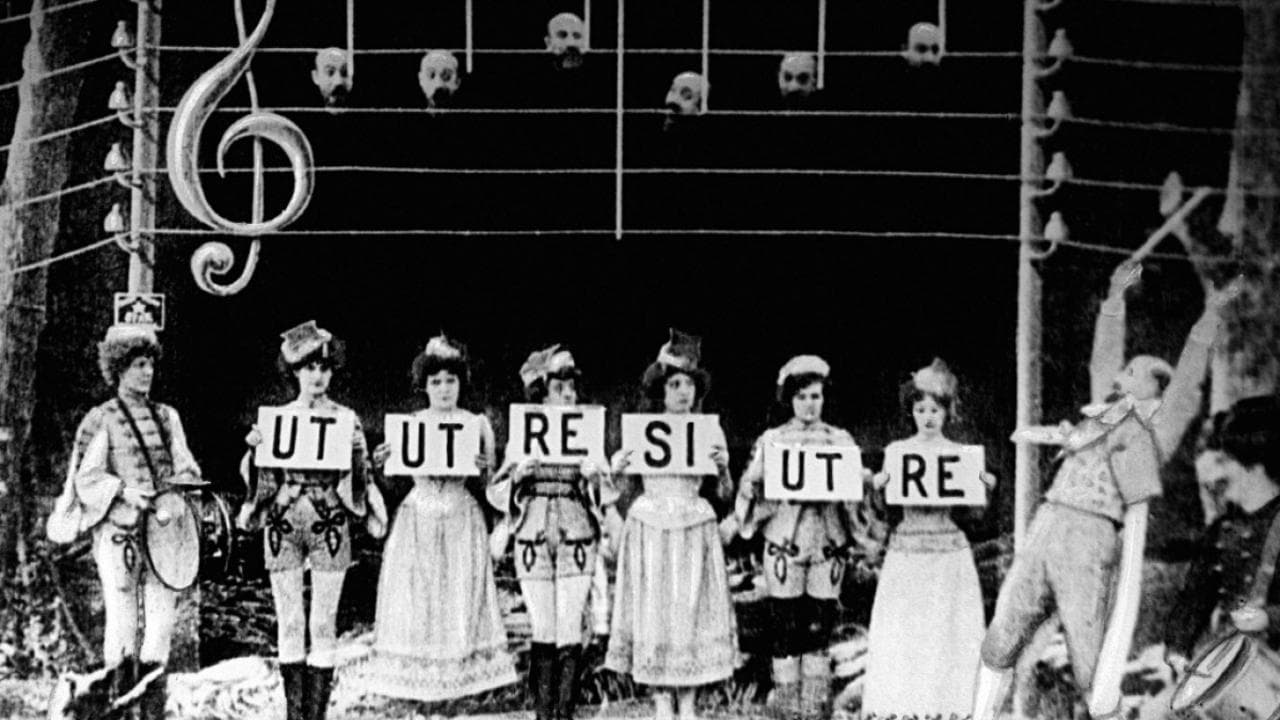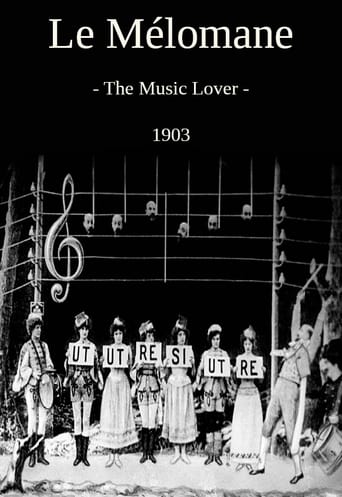Supelice
Dreadfully Boring
Billie Morin
This movie feels like it was made purely to piss off people who want good shows
Jerrie
It's a good bad... and worth a popcorn matinée. While it's easy to lament what could have been...
Red-Barracuda
Le mélomane is another of Georges Méliès trick films. In it he plays a musical instructor who teaches a group of female musicians in his own eccentric manner. In this case by using several Méliès heads to illustrate the notes. It's typically insane stuff from the master of innovation.It recalls some of the ideas he invented in previous films. It's almost like a collision of L'homme orchestre and Un homme de têtes. It has the musical theme of the former and the multiple Méliès heads of the latter. So it doesn't really bring anything especially new to the table but it is well crafted nevertheless. Perhaps the oddest aspect about this production is that it appears to be a silent movie with a musical theme. Not exactly the most obvious combination it has to be said. The result is another charming oddity from this cinematic pioneer.
MartinHafer
You've just got to see the films of Méliès, as they are the cleverest and best made films of his era--period. Unlike the relatively plot less, setless and pointless films of Edison and Lumiere, Méliès' films were pure genius and inspired--with a strong dose of fantasy. His Le Voyage Dans le Lune is a landmark film due to its amazing special effects, camera tricks and watchability.This film carries on in this same tradition--with the absolutely wildest and strangest trickery I've seen from the era. The film begins with a conductor explaining to his musicians how to write music. So, the conductor begins throwing notes up into the air where they magically stick. And, the notes?! Yep, they are his head--he pulls off his head and throws it upwards--and a new one appears in its place! You just gotta see it to believe it!If you want to see this film online, go to Google and type in "Méliès" and then click the video button for a long list of his films that are viewable without special software.
tavm
This is one of Melies' most unusual shorts in which he portrays a music teacher who is trying to teach his students some harmony by having various heads of his representing notes on a large series of lines above him. I've always wondered how those various heads keep popping up from his body like that. In the documentary film, The Magic of Melies, I found out Georges stops film in camera, covers his head with a black sheet to match the background, then starts film again. Of course, any technical problems are fixed in editing. The way short ends with all those musical head-notes flying around is one of the most awesome sights I've seen in silent movies. By all means, seek The Music Lover out!
Snow Leopard
Georges Méliès had such a marvelous imagination that you should never be surprised with anything that he comes up with, but even when you've seen dozens of his features, there's still a good chance that the next one you see could have something new. In this short feature, he combines visual tricks with copies of his own head, something he had already done in a number of previous comedies, with an amusing and creative musical setting.Méliès plays the leader of a marching band who shows them their music on a giant staff, using the heads and various other implements to write the music. It's funny, and the special effects are interesting and work quite well, as usual. (A previous reviewer has given a particularly apt description of the enjoyable trick with the heads.) It's a resourceful way to use a musical setting without having the benefit of the actual music or of any other sound, and it's also enjoyable to watch.

